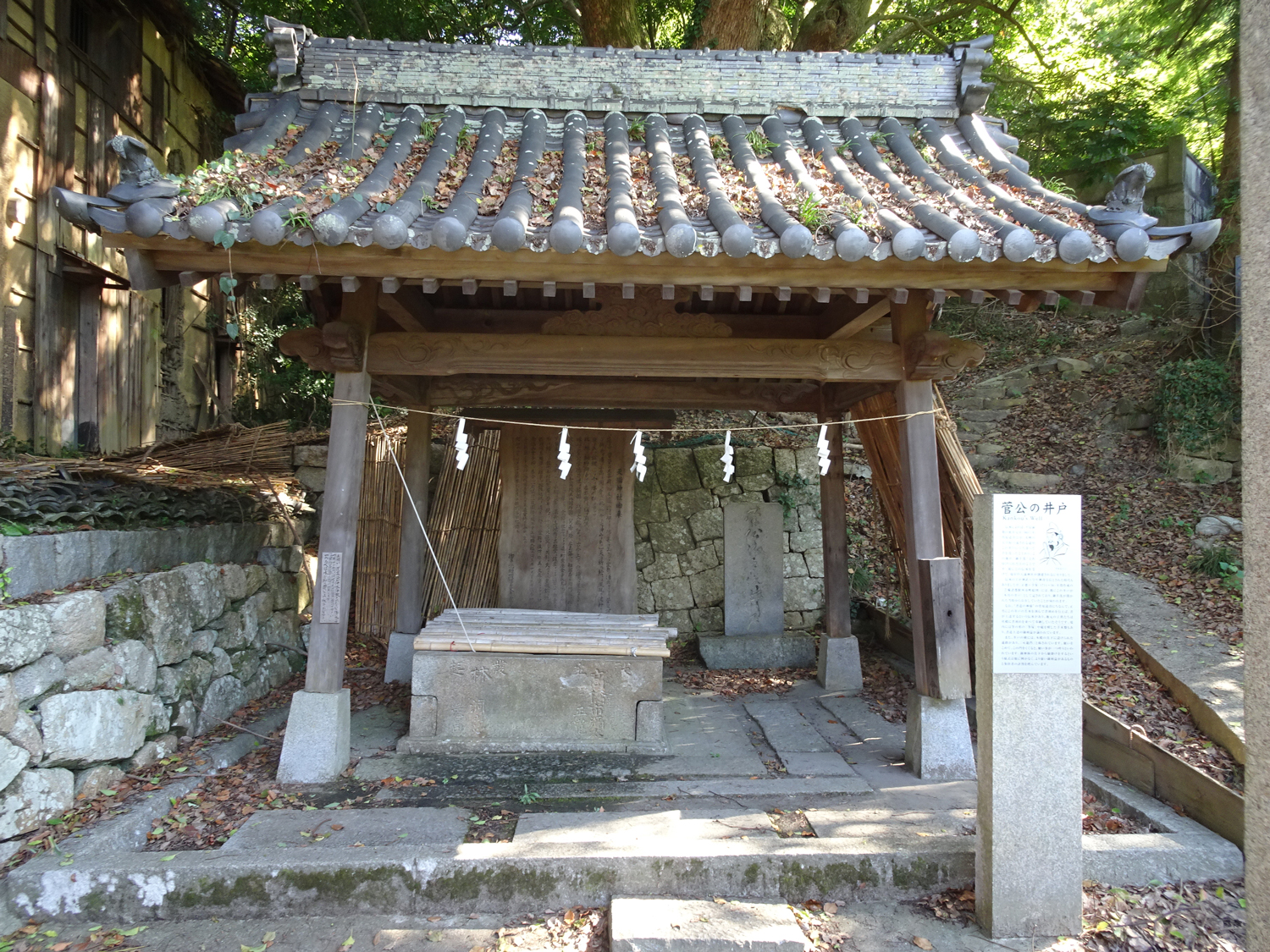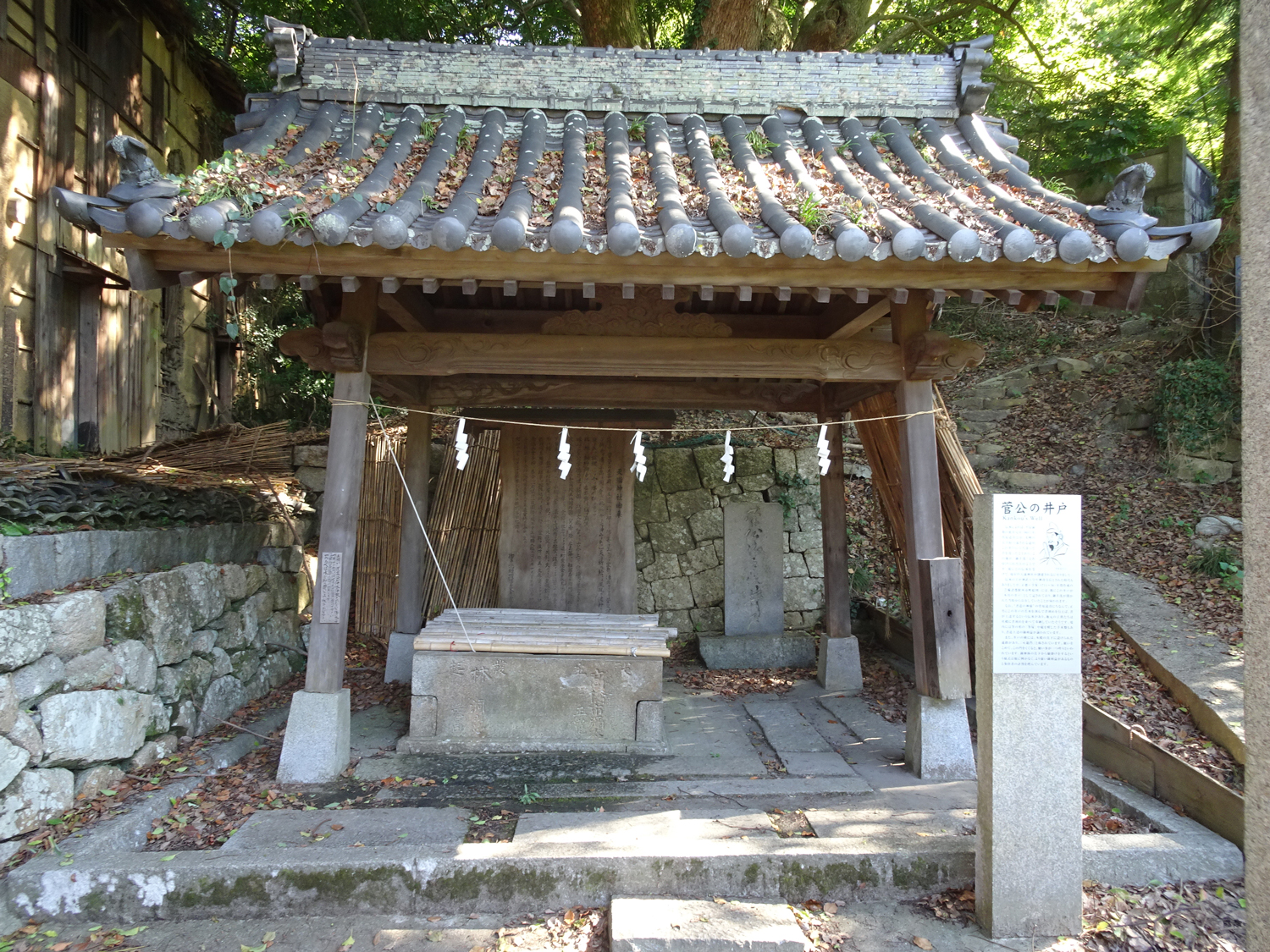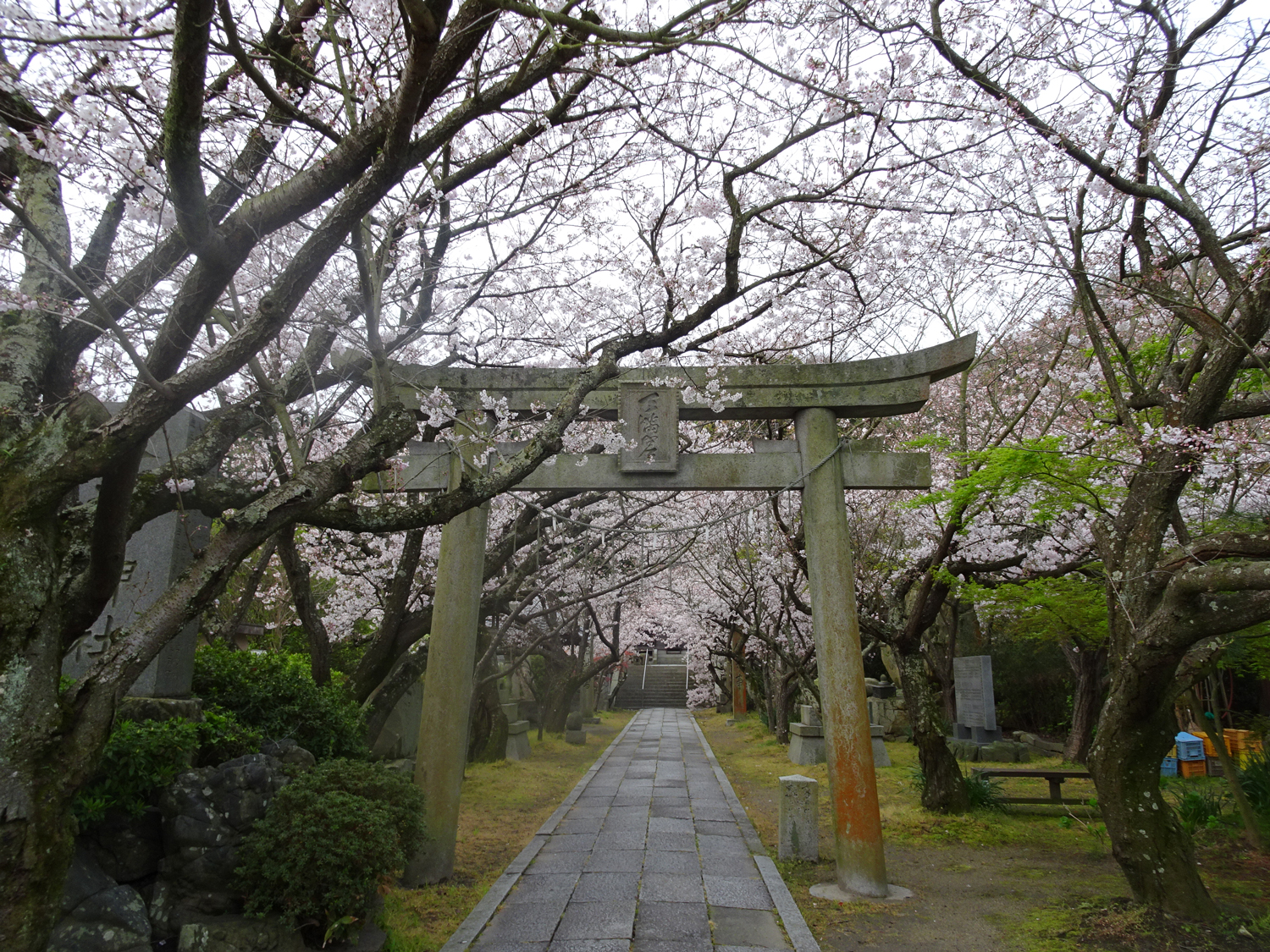天満神社 Tenman Jinja Shrine
天満神社は、著名な学者・詩人・貴族であった菅原道真公(845~903)が参拝した場所といわれている。道真は、京都から九州に向かう途中、御手洗に立ち寄り、井戸で手を洗ったといわれている。このエピソードが「御手洗」の名の由来となっている。道真公の死後、道真公は学問と文筆の神様である天満大自在天神として祀られている。1755年、御手洗で最初の天神様を祀る神社が満州寺の境内に創建された。1871年(明治4年)、道真が手を洗ったとされる井戸の横に新たな社殿が建てられ、満州寺にあった像が現在の天満神社に移された。現在の社殿は、大正6年(1917年)に御手洗の住民の寄付により建てられたものである。
神社の入り口には鳥居が立っており、神聖な空間への入り口となっている。桜並木が続く参道の左手には、参拝の際に手や口を洗うための伝統的な洗面台がある。この洗面台は大きな硯のような形をしており、学問や書物との関わりを象徴している。洗面台の横には、天神様の神社でよく見かける、使い古された書道用の筆を記念して作られた「筆塚」がある。その右手には、道真公の詩が刻まれた大きな石碑があり、道真公の人生にお世話になった人々への深い謙虚さと尊敬の念が込められています。また、御手洗生まれの冒険家であり、明治35年から明治36年にかけて自転車で世界一周をした中村春吉(1871-1945)を讃える石碑がある。

参道から階段を登っていくと、天神様が祀られている拝殿と本殿がある。本殿の下には、道真公が手を洗ったとされる井戸があり、境内の奥へと続く「可能門」と呼ばれるトンネルがある。可能門をくぐると願い事が叶うと言われていますが、参拝者は一回の参拝で一回しか願い事をすることができない。また、この井戸の水を使って、新年の初めに縁起の良い漢字を書くと、書道の腕が上がるとも言われている。

Tenman Jinja Shrine is said to mark the location of a visit by renowned scholar, poet, and aristocrat Sugawara no Michizane (845–903). While traveling from Kyoto to the Kyushu region, Michizane is believed to have stopped in Mitarai and washed his hands at a well. This episode became the origin of the name “Mitarai,” which literally translates to “honorably washing one’s hands.” After his death, Michizane was deified as Tenman Daijizai Tenjin, the Shinto deity of scholarship and writing. The first Shinto shrine dedicated to Tenjin in Mitarai was built in 1755 on the grounds of Manshūji Temple. In 1871, a new shrine was built next to the well at which Michizane is believed to have washed his hands, and the statue from the original shrine at Manshūji was moved to its current location at Tenman Jinja Shrine. The current shrine building was constructed in 1917 using donations from the residents of Mitarai.
A torii gate stands at the entrance to the shrine, marking the transition into sacred space. The path is lined with cherry trees. Facing toward the shrine, on the left side stands the traditional washbasin for rinsing one’s hands and mouth before praying. This washbasin is shaped like a large inkstone to symbolize the temple’s connection to scholarship and writing. Alongside the washbasin is a fudezuka, a memorial for worn-out calligraphy brushes. Memorials like it are often found at shrines to Tenjin. To the right of the path is a large stone monument dedicated to Michizane that has been engraved with one of his poems. The text expresses his deep humility and respect for the people who helped him in life. A second stone monument honors Nakamura Harukichi (1871–1945), an adventurer born in Mitarai who traveled around the world by bicycle between 1902 and 1903 and was rumored to be a spy.

Stairs lead up from the pathway to the shrine’s worship hall and main sanctuary (honden), where Tenjin is enshrined. A tunnel called the “gate of possibility” (kanō-mon) passes below the honden and leads to the back of the shrine precinctsand the well in which Michizane is rumored to have washed his hands. Wishes made while walking through the kanō-mon are said to come true, although each visitor is only allowed one wish per visit. Additionally, it is said that using the water from this well to write the traditional auspicious kanji character at the start of the New Year will improve the calligrapher’s penmanship.


